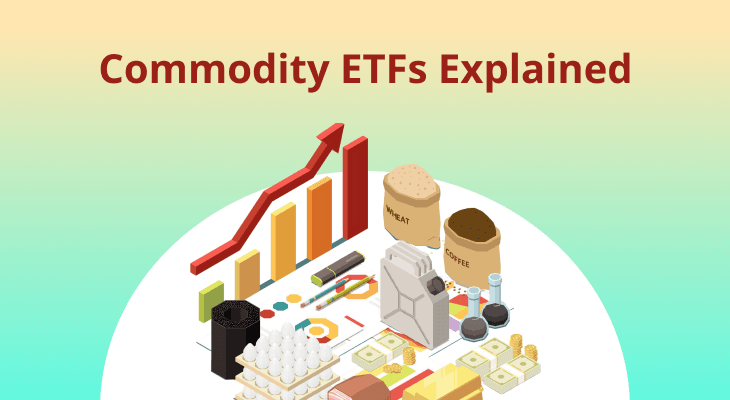
Selecting A Mutual Fund Portfolio - A Comprehensive Guide
Investing in mutual funds can be a powerful strategy to grow wealth and achieve financial goals. The attractiveness lies in the potential for returns and the convenience of professional fund management. However, with a plethora of options available, creating a well-thought-out mutual fund portfolio becomes crucial. Your choice of funds can significantly impact your investment outcomes, emphasising the need for a carefully curated mutual fund portfolio.
In this comprehensive guide, we'll navigate the intricacies of selecting a mutual fund portfolio, breaking down the steps involved, and shedding light on crucial considerations. From defining your investment objectives to monitoring your portfolio's performance, we'll explore the key aspects that can help you build a robust mutual fund portfolio tailored to your financial aspirations. Let's embark on this journey to optimise your investment strategy and unlock the potential of mutual fund investments.
Crafting a Mutual Fund Portfolio: A Step-by-Step Guide
Creating a balanced, profitable, and sustainable mutual fund portfolio is not rocket science. However, it does require a fair amount of research, understanding, and knowledge. Here are some steps that are likely to help you craft a mutual fund portfolio that meets your various financial goals.
Step 1: Defining Your Investment Goals
Begin your journey by articulating your investment objectives. Whether your goal is wealth creation, retirement planning, or funding a child's education, a clear sense of purpose will serve as the guiding light throughout the portfolio-building process. For example, for short-term goals such as saving for a vacation or purchasing a gadget, you can opt for liquid funds or short-term debt funds for stability and quick access.
For mid-term goals like saving for a down payment on a house or funding higher education, balanced funds or a mix of equity and debt funds could be suitable for these mid-term aspirations. Retirement planning or buying a property, and other long-term goals are best managed by equity mutual funds, especially diversified equity funds that can offer growth potential over an extended period.Step 2: Establishing The Right Asset Mix
The foundation of a successful portfolio lies in thoughtful asset allocation. Evaluate your risk tolerance and allocate investments among diverse asset classes—equities, debt, and potentially others—to achieve a balanced and well-diversified portfolio. Consider your investment horizon as well; longer terms often allow for a higher equity exposure. Regularly reassess and rebalance your portfolio as market fluctuations may alter the original asset allocation. Avoid overexposure to any particular asset class for balanced diversification.
Step 3: Exploring A Spectrum Of Mutual Funds
There is a vast array of Mutual Funds available in the market making the choice complicated, at times. To find the optimal fund for your needs, scrutinise fund performance, historical returns, and consistency in delivering results. Assess the fund manager's track record and investment strategy, ensuring it aligns with your goals. Diversification is key; explore funds across different sectors and market caps to mitigate risks. Understand the fund's expense ratio, as lower fees contribute to higher returns.
Also, keep an eye on the fund's historical volatility and how it responds to market fluctuations. Leverage online resources, expert opinions, and fund fact sheets for a comprehensive analysis. This thorough examination is crucial in cherry-picking funds that resonate with your financial aspirations.Step 4: Curating Your Ideal Mutual Fund Mix
Crafting a well-balanced mutual fund portfolio involves curating an ideal mix that aligns with your investment objectives. Diversify across fund categories such as equity, debt, and hybrid to spread risk and optimise returns. Consider your risk tolerance, time horizon, and financial goals when selecting funds. A judicious mix may include large-cap, mid-cap, and small-cap equity funds, alongside debt funds offering stability. Allocate resources based on your risk appetite, with equity for long-term growth and debt for stability. By meticulously curating your fund mix, you create a resilient portfolio capable of navigating the dynamic financial landscape.
Step 5: Monitoring And Managing Your Portfolio
Once you've constructed your mutual fund portfolio, the journey doesn't end – active monitoring and management are imperative for sustained success. Regularly assess the performance of your funds against their benchmarks and reevaluate your asset allocation as market conditions evolve. Stay informed about economic trends, fund manager changes, and global events that might impact your investments. Rebalance your portfolio periodically to maintain the desired asset mix and realign with your financial objectives. Using online platforms like m.Stock makes monitoring quite simple and convenient since you can view the performance of all your investments in a single dashboard.
Additionally, consider tax implications and make informed decisions about when to redeem units. By actively managing your portfolio, you ensure that it remains resilient and aligned with your evolving financial goals.Step 6: Upholding Discipline For Financial Success
As you navigate the undulating waves of market dynamics, discipline emerges as the cornerstone of success. Stay committed to your predefined asset allocation and financial goals, and avoid impulsive decisions triggered by short-term market movements. You can also establish a systematic investment plan, adhering to a regular investment schedule regardless of market fluctuations. A patient approach allows your investments to compound over time so that you can reap the rewards you have worked hard for.
Considerations Before Constructing Your Mutual Fund Portfolio
Now that we have answered the question – ‘how to select a mutual fund portfolio?’, let us take a look at the various considerations to keep in mind to build a portfolio that can withstand market volatility and help you achieve your diverse financial goals.
Investment Goals Clarification
Defining clear investing objectives is the foundational step in building a robust mutual fund portfolio. Begin by identifying your financial goals – whether it's wealth creation, retirement planning, or funding a specific milestone. Tailor your portfolio to align with the time horizon of each goal. For long-term goals, consider equity-oriented funds to harness compounding, while short-term goals may benefit from debt funds offering stability. Having specific and measurable objectives enables you to select funds that match your risk tolerance and investment horizon, ensuring your portfolio becomes a dynamic tool in achieving your financial aspirations.
Gauging Your Risk Appetite
Understanding your risk tolerance is crucial when constructing a mutual fund portfolio. It involves assessing your ability to handle market fluctuations without jeopardising your financial goals. A risk-averse investor might lean towards debt funds for stability, while someone comfortable with market volatility might explore equity-oriented options for potentially higher returns. Consider factors such as age, financial commitments, and investment horizon in determining your risk appetite. Striking the right balance ensures that your portfolio aligns with your comfort level, fostering a harmonious journey towards your financial objectives.
Crafting A Diversified Strategy
Diversification is the foundation of a sound mutual fund portfolio. It involves spreading investments across various asset classes, sectors, and fund types to mitigate risk. By not putting all your eggs in one basket, you enhance the potential for stable returns. A well-diversified strategy balances the portfolio, ensuring that the performance of one investment doesn't significantly impact the overall outcome. Carefully select funds to maximise the benefits of diversification. Crafting a diversified strategy safeguards your investments against market volatility and positions your portfolio for long-term growth.
Unravelling Fund Expenses
Understanding mutual fund expenses is crucial for investors aiming at optimal returns. Fund expenses, expressed through the expense ratio, include management fees, administrative costs, and other operational charges. A lower expense ratio is generally favourable as it implies more of your returns stay invested.
However, it's essential to weigh this against the fund's performance. Active funds might have higher expenses due to professional management, while index funds usually boast lower ratios. Assessing fund expenses enables you to make informed decisions about cost-efficiency and aligns with your investment objectives. Dive into the nuances of fund expenses to ensure your money works diligently toward your financial goals.Analysing Fund Performance
Evaluating mutual fund performance involves a nuanced analysis of returns and risk metrics. Returns, often expressed as compound annual growth rate (CAGR), showcase the fund's historical performance. However, it's crucial to delve beyond absolute returns and consider risk-adjusted measures like Sharpe and Sortino ratios.
These metrics gauge how efficiently a fund generates returns relative to its volatility. Understanding standard deviation, a measure of volatility, helps assess a fund's risk level. Moreover, assessing consistency in performance over different market cycles provides valuable insights. Armed with these analytical tools, investors can make informed decisions, aligning their portfolio with financial aspirations while balancing risk and reward.
Conclusion
In conclusion, the art of building a mutual fund portfolio goes beyond mere instructions and steps; it involves a strategic, disciplined, and well-informed approach. By combining together your objectives, risk tolerance, and a commitment to discipline, you can craft a portfolio that weathers the complexities of the investment landscape with resilience and potential for enduring success.
SIPs let you invest small amounts regularly, making it easier to stay consistent with your goals. With time, your money grows faster through compounding, helping you get the most out of your investments. Try our SIP Calculator to see how your money can grow and make smarter plans for your future.
FAQ
How do I define my investment goals?
When defining your investment goals, it's crucial to first understand your financial aspirations. Whether you're aiming for wealth creation, planning for retirement, or saving for a specific goal like a home or education, clarifying these objectives is the initial step. Once identified, prioritise these goals based on their timelines and importance in your overall financial plan. This helps tailor your investment strategy to align with your unique financial circumstances and aspirations.
Why is asset allocation crucial in building a mutual fund portfolio?
Asset allocation plays a pivotal role in building a resilient and well-balanced mutual fund portfolio. The concept involves distributing your investments across various asset classes, such as equities, debt, and other instruments. The goal is to balance risk and return, ensuring that your portfolio is not overly exposed to the fluctuations of a single asset class. By diversifying across different types of investments, you optimise returns based on your risk tolerance and financial goals.
What factors should I consider while researching mutual funds?
Researching mutual funds requires a comprehensive analysis of various factors. Start by evaluating the historical performance of the fund, considering both short-term and long-term returns. Assess the expertise of the fund manager, as their skills and experience significantly impact fund performance. Scrutinise expense ratios, as lower expenses contribute to higher returns.
How can I maintain discipline in managing my mutual fund portfolio?
Discipline is a key factor in successful portfolio management. To maintain discipline, set clear investment goals at the outset and periodically review and reassess them. Avoid making impulsive decisions based on short-term market fluctuations. Instead, adhere to the predefined investment strategy, staying focused on your long-term financial objectives.
Is diversification important in a mutual fund portfolio?
Diversification is a fundamental principle in constructing a resilient mutual fund portfolio. The strategy involves spreading investments across different asset classes, sectors, and geographical regions. This diversification minimises risk by reducing the impact of poor performance in any single investment on the overall portfolio. It enhances stability and guards against concentration risk in specific securities or sectors. A diversified portfolio aims to achieve a balance between risk and potential returns.
What are the key considerations for assessing fund expenses?
Assessing fund expenses is a critical aspect of selecting mutual funds to make informed decisions that positively impact the overall returns of your mutual fund investments. Pay close attention to expense ratios, which represent the percentage of fund assets used for operating costs. Lower expense ratios translate to higher returns for investors. Compare the expense ratios of different funds within the same category to ensure cost-effectiveness.
How can I analyse mutual fund performance beyond returns?
Analysing mutual fund performance goes beyond merely looking at returns. Consider using risk-adjusted metrics such as the Sharpe ratio and Sortino ratio. These metrics provide insights into a fund's performance relative to its volatility and risk. Additionally, assess the fund's consistency across various market cycles. A fund that consistently performs well, irrespective of market conditions, may demonstrate a more robust and reliable track record.
What role does risk appetite play in mutual fund selection?
Your risk appetite is a crucial factor in determining the suitability of mutual funds for your portfolio. Assess your risk tolerance by considering your financial goals, time horizon, and comfort level with market fluctuations. Understanding your risk appetite helps align your portfolio with an appropriate level of risk, ensuring a balance between potential returns and acceptable volatility. By selecting funds that match your risk profile, you create a more personalised and sustainable investment strategy.


